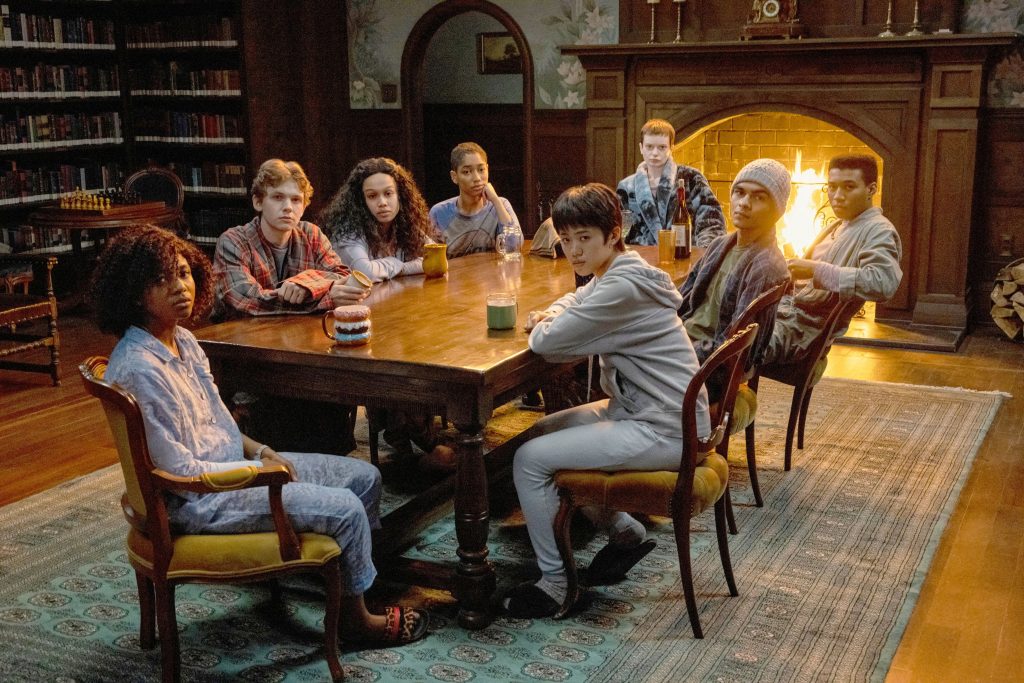The go-to source for Netflix’s scary season, Mike Flanagan produces yearly horror miniseries that double as a kind of Trojan horse for in-depth discussions of life, death, and faith. Flanagan’s home design has matured as a result of The Haunting of Hill House, The Haunting of Bly Manor, and Midnight Mass. A Flanagan movie will contain flowery monologues, complex group dynamics, and terrifying backstories for the key characters that underlie the horrors being provided in the main plot. Leah Fong, a co-producer of Bly Manor, and Flanagan collaborated on the adaptation of Christopher Pike’s YA novel series The Midnight Club for Netflix. Sadly, this. Are You Afraid of the Dark? -meets-The Fault in Our Stars melodrama finds Flanagan’s customary techniques feeling tired.
The Midnight Club concentrates on Ilonka (Iman Benson), a bright high school girl with Ivy League aspirations who discovers she has terminal illness. She makes the decision to spend her remaining time at Brightcliffe, a hospice that focuses on young people. The youthful residents of Brightcliffe gather every evening to tell spooky tales as a way of digesting the bleak truths of their circumstances. Ilonka and the club members gradually learn about the enigmatic background of Brightcliffe, including knowledge about other secret organisations, occult activities, and a former patient who was purportedly magically healed.
The majority of the series follows Ilonka as she attempts to blend in with the other Brightcliffe patients, including her brash, cynical roommate Anya (Ruth Codd) and love interest Kevin (Igby Rigney), while also learning about the history of the old mansion in the hopes that it may hold a secret that will help her get better. The remaining duration adopts an anthology style as we watch the stories from The Midnight Club come to life, with the club members playing the characters. A few of the stories are adaptations of works by Pike.
The anthology technique is typically hit-or-miss, but it does a great job of illustrating the value of tales and storytelling, particularly in the face of incomprehensible stress or sadness, and how stories can help us cope with the emotions we might not be able to express in other ways. However, when a particular story does feel interesting and lively, like Kevin’s story about a young serial murderer, it is fragmented over three episodes, which slows down the story’s progression. Nevertheless, props to the crew for providing each narrative a unique style that matches the genre. For example, using a 4:3 aspect ratio and shooting in black and white gives a noir plot more impact. Even so, some of these stories absolutely miss the mark, sometimes on purpose, but you won’t be pleading with the characters to get back to the boring main story.
Trying to quick fix Emotional resonance
Although it seems like a quick fix to achieve emotional resonance to have a cast full of dying children, Flanagan isn’t a straightforward storyteller. The text delves deeply into complex, challenging ideas about death and dying, including witty reflections on why we use combat vocabulary while discussing illness and how showing pity to someone who are near death might be harmful. In contrast, the regularity with which characters break into emotional monologues has a numbing effect, much like Midnight Mass. By the hundredth monologue describing what it feels like to know that you are dying, your eyes may start to glide over. Additionally, Flanagan’s lush writing isn’t always well-sold by the youthful performers.
Despite this, the young ensemble gives several standout performances, particularly Codd, who turns the snarky Anya from a bothersome grouch into the centre of the show. The other characters appear empty in compared to Anya, who has been given a character with such depth and nuance that it nearly aches. After 10 episodes, there are still club members I am unable to name, however the show does give characters like Spence, a gay AIDS sufferer portrayed by Chris Sumpter, due development in the second part of the season. The adult cast members are more consistently excellent, with Nightmare on Elm Street veteran Heather Langenkamp as Brightcliffe’s compassionate yet firm Dr. Stanton and Flanagan favourite Samantha Sloyan. As previously said, another criticism is that the main storyline—about Ilonka trying to learn more about a former inhabitant who was mysteriously sent home—doesn’t feel like it progress.
Limp scares are big issues
The Midnight Club is by far Flanagan’s least frightful film to date, and with time, it seems like he has less interest in frightening his audience. To placate reviewers like me who are hoping for something creepy, it almost seems like the show forgets that it was sold as a horror series and remembers mid-episode. The scary components in this series certainly seem like an afterthought, though perhaps that’s because it’s intentionally aimed at a younger audience.
As previously said, another criticism is that the main storyline—about Ilonka trying to learn more about a former inhabitant who was mysteriously sent home doesn’t feel like it progresses. There is one major revelation in the story, but viewers will know it is coming a mile away. Season one of The Midnight Club concludes with a cliffhanger that will probably leave you scratching your head rather than eagerly awaiting the upcoming season since, unlike Flanagan’s other shows, it looks that a second season is in the works.
